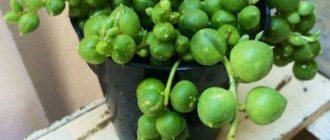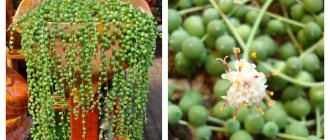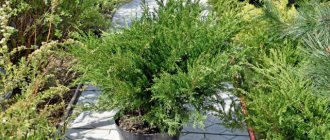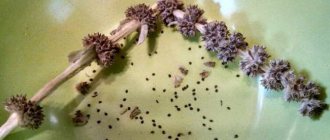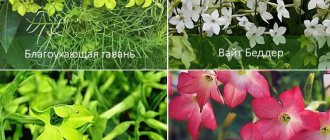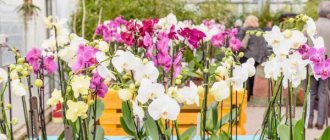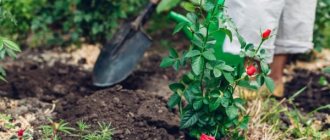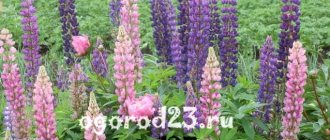Senecio is a less common name for the many-sided ragworts known to many plant growers, which are successfully grown both in the garden and as a flower in a pot at home. These herbaceous perennials are so diverse in form that it is difficult to accept the fact that they are all representatives of the same group. However, these are close relatives who are absolutely no different from each other in the principles of cultivation and care. It is a surprisingly diverse yet incredibly united flower culture.
Biological description
All godsons are classified as succulents, i.e. plants capable of heating up moisture reserves and living off them in depleted growing conditions. The species diversity of senecio is enormous, including coniferous greens, pea-like greens, and climbing ones like ivy. Their shoots can grow like vines, or they can form bushes and even trees. Moreover, they can be pubescent and bare, erect and drooping, and the shape of the leaves of this group of plants makes it almost impossible to cover. In nature, there are more than 3000 of them. And they all have only one thing in common - the classic inflorescence-basket.
Senecio is grown both as a potted and garden crop. There are species that are intended for cutting. From ragworts alone you can create a rich collection of succulents, which will be very diverse.
Popular varieties of Senecio, photo of flowers
With all the great variety of ragworts in indoor culture, the following varieties are most widespread.
Godson Rowley
The undoubted leader among the Senecio. It is valued for its rapid growth and spectacularly hanging thin shoots with “peas” of leaves seemingly strung on them. The plant is popularly called “string of pearls”. The inflorescences are spherical in shape and have a cinnamon scent.
Ashy ragwort (Senecio Maritima)
In nature and when grown indoors, it is a perennial; it is grown on the site as a one-year plant. It is valued by landscape designers for its particular attractiveness as carpet plantings. In warmer regions it is grown as a wintering balcony crop, which in Europe is especially valued as a Christmas decoration for homes. The foliage is silver in color, against which the bright yellow inflorescences look contrasting.
Thicker groundsel (Senecio Crasissimus)
An erect shrub variety with stems growing up to 40-50 cm. The shoots are branched, rough, the leaves are green with a grayish-silver tint, oval with a slight point at the ends. The inflorescences are yellow, formed on a high peduncle.
Creeping ragwort
A variety characterized by short stature. Forms a compact upright shrub about 10cm high. The leaves are ligulate, linear-lanceolate, small (3-4 cm), directed straight upward. The shoots are fleshy. Valued for its muted color in bluish-gray tones. It looks unusual in a flower pot and contrasts perfectly with decorative pebbles as mulch. The flowers are white, sparse, collected in baskets.
Senecio rooting
The stems are creeping, ampelous, thin. branching, up to half a meter in length. The elongated thick leaves are round in shape, sparsely spaced and look very impressive due to their claw-like bend.
Senecio is often confused with cineraria. These are close relatives, but still different plants.
Raspberry (Senecio), care and cultivation
For any garden
Latin name Senecio
Family Asteraceae
Homeland Mediterranean, Asia, Africa, New Zealand and America
The genus Senecio includes more than 3,000 species of various plants. Shrubs, herbaceous and semi-shrubs, annual, biennial and perennial, stable and tender even within the same type of crop. For the most part, these are succulent species, that is, they store moisture in plant tissues.
These include, for example, seaside groundsel (Senecio maritimus), a species that grows up to 50-60 cm in height. In the summer, nondescript yellow baskets bloom. A noticeable part of the plant is its heavily rugged leaves of a silvery-white color, which is given to them by thick fluff. This plant is grown in seaside rock gardens, usually as an annual or biennial.
Among the perennials for rock gardens, common groundsel (S. doronicum) is a plant 10-60 cm high; blooms in spring and summer with orange-yellow baskets.
Gray ragwort (S. incanus)
- a crop 5-10 cm high, yellow small and flat inflorescences appear in summer. The entire plant is covered with silvery-white hairs. Leaves are elongated-ovate.
The following types are very interesting from a decorative point of view. Thick groundsel (S. crassissimus)
up to 60 cm high. Fleshy, flat, rounded leaves of gray-blue color with a reddish edge.
Haworth's ragwort (S. haworthii)
- a plant 50 cm high with yellow-blue cylindrical leaves covered with silvery fluff. Orange-yellow flowers are produced in summer.
Rooting groundsel (S. radicans)
- ground cover dwarf (height 10 cm) plant. The blue-gray leaves are irregularly spherical in shape; baskets are white.
Shrubby non-succulent species are evergreen, unpretentious plants that are grown mainly in coastal areas.
Gray's ragwort (S. greyi)
grows up to 1.5 m. Silver-gray leaves have an ovate-oblong shape. The underside of the leaf blade is covered with gray fluff. In summer, yellow baskets collected in panicles bloom.
Common groundsel (S. laxifolius)
- a shrub 2 m or more high, with leaves and stems of brown-green color. In summer, yellow baskets collected in panicles with purple flowers appear in the middle.
Herbaceous species are grown in flower beds, for example, grandiflora (S. grandiflorus) - a perennial up to 1.5 m high. In the summer, yellow baskets with a purple tint, collected in large shields, bloom.
Home care
Senecio is, like all succulents, a hardy crop that can more easily withstand lack of care than heavy watering and other excessive measures. They can be easily grown at home by inexperienced and even careless gardeners. But you still need to know some simple rules of agricultural technology.
Lighting
Without exception, all varieties of crosses belong to light-loving crops, which, however, are ready to put up with some inconveniences in this regard. But they need to be provided with several hours of full sunlight. Ideal for them would be western and eastern window sills, slightly shaded southern windowsills at midday (the light should be diffused) or other locations of equal illumination. Lack of light is expressed in increased growth due to thinning shoots and loss of bright foliage color.
Watering
All succulents require moderate watering and do not tolerate waterlogging, and ragworts are the most sensitive in this regard. This point is the most difficult and strict to implement. Even during the active growing season (spring-summer), watering should be moderate. You don’t need to focus solely on the recommended frequency, but check each time whether the substrate is dry enough for the next watering. After the earthen ball dries out completely, it needs to be allowed to remain in this state for 2 days.
By autumn, these moderate procedures begin to be reduced even more, increasing the pause and preparing the succulent for wintering conditions. During the dormant period, almost dry conditions are created for the flower in the pot, occasionally adding moisture so that the greenery does not wilt. If there are no signs of loss of their elasticity, you don’t have to water the plant at all. It is unacceptable to use hard, calcareous water. In addition, it should always be well settled.
Air humidity
Crosses do not need humidified air at all; they feel even better in a dry room. Therefore, there is no need to take any measures to moisturize, much less spray the plant.
Temperature
Despite its southern origin, Senecio cannot be considered a fan of hot greenhouse conditions. Comfortable temperatures for it lie in the range of +22...+27C in spring and summer with a gradual decrease during the rest period, within the limits of what is possible for city apartments. If it is possible to provide cool temperatures of +12...+15C, the plants will have a great rest and will actively grow in the spring. The minimum threshold is considered to be +7C, but such a decrease is permissible only for a very short period.
Small deviations from the recommended temperatures are not critical, the main thing is that they should not be sharp.
As for drafts, the plant tolerates them well for a short time, but you cannot place a flower in a pot where there are constant drafts. One of the recommendations on how to care for senecio is frequent ventilation, since the culture loves fresh air. In the warm season, if possible, they can be placed outside, but not in direct sunlight. But any change in conditions should not be abrupt.
Top dressing
Feed the ragworts according to the usual strategy for succulents, 1-2 times a month, but only during the active growing season. Autumn and, especially, winter feeding can deprive the plant of the necessary resting phase. Ready-made compounds for succulents are used as fertilizers.
Senecio ARCHERI 'HIMALAYA'
Characteristics:
One or more plants in a technical pot with a diameter of 5 cm without a flower pot (first photo). The pots can be purchased separately here.
You can also purchase fertilizers and other related products here.
The first photo is REAL and true!
DELIVERY:
Pickup (free) or mail. The cost of mailing plants in pots is calculated individually, depending on the weight and size of the plants and the distance of the destination from Moscow time.
ATTENTION:
Only seeds and assortment of items are sent by cash on delivery. Live plants are sent upon payment in advance.
Usage:
It looks great both as an independent plant and as a 1st and 2nd plant in compositions of succulents.
Description:
Raspberry is one of the most unusual genera of amazing plants from the large family Asteraceae (Asteraceae), the varieties of which include more than 3,000 different specimens. Perennial, less often annual, herbaceous plants, subshrubs, shrubs or small trees, widespread in different climatic zones in all regions of the globe. Many species of this plant are completely different from each other, but nevertheless belong to the same family and are “blood relatives”.
Their shoots are bare or pubescent. The leaves are also very diverse in shape - from elliptical to obovate, entire and dissected, lobed, pinnate, alternate. Inflorescences are baskets, from small to large, single or several in corymbs or panicles. Many representatives of this huge genus are known in culture; they are grown in open and closed ground as ornamental plants, they are bred for cutting, as potted plants, and are also used to decorate bouquets.
Archer's godson
- one of the most popular representatives of the genus. A perennial bush-like succulent with low, about 30 cm, fragile succulent stems. The shoots of the plant are covered with cylindrical soft leaves, shaped like small needles. It blooms with yellow chamomile-like flowers, collected in sparse inflorescences, which are located at the ends of the shoots.
Care:
The ragwort prefers a well-lit place, with some direct sun. A location on the east and west window is good. In the spring-summer period, it prefers a temperature of 22-26°C; in the fall, the temperature can be gradually reduced and in winter the plant can be kept at 12-15°C; the temperature should not fall below 7°C. It tolerates dry apartment air well and does not need additional humidification.
During the growing season, the groundsel is watered with moderately soft, settled water, a day or two after the top layer of the substrate has dried. In the fall, watering is reduced, in winter they water extremely rarely, or do without watering. Overfilling is very dangerous. Feed from March to August with fertilizers for succulents 2 times a month. The soil mixture should be nutritious, loose, with a neutral pH. A mixture of leaf soil and sand in a ratio of 2:1 is suitable. Ready-made substrates for cacti or succulents are suitable. Young plants are replanted annually in the spring, adults - after 2-3 years. Raspberries are propagated by cuttings, layering and seeds.
The soil
The easiest way is to use ready-made soil mixtures made for cacti and succulents. If it is not possible to buy a ready-made substrate, you need to select a loose, moderately nutritious and acid-neutral soil. It can be a mixture of leaf soil and coarse sand (2:1); some specimens grow better in a sandy-clay substrate. Much depends on what the plant is used to, therefore, when purchasing an already grown specimen of a flower in a pot, you should pay attention to what it grew in, or ask the seller about the composition of the soil.
Transfer
Actively growing young specimens require transplantation annually. Starting from the 3rd year of life, they need to be replanted only as needed. It is recommended to do this in the spring, when the plant is preparing or just starting to wake up. A fairly high drainage layer is poured into the bottom of the new dish (higher than for ordinary plants). When replanting, it is necessary to monitor the position of the root collar; its level must be maintained; deepening is unacceptable. Transplantation is carried out by transshipment with minimal damage to the root system.
Reproduction
Reproduction of senecio is considered as simple as caring for a flower. There are three methods available for this: cuttings, seeds and layering.
Seeds
The method is rarely used due to the length of the process, as well as the difficulty of obtaining seed material. The fact is that at home, senecio rarely bears fruit, and when buying ready-made seeds, there is a high risk of buying a low-quality product due to the short germination period. Ideally, these should be seeds no older than 1 year. Before sowing, the seed material is soaked until germination, after which it is laid out several at a time in a container with a very shallow depth. Planting in a permanent place is carried out after the seedlings form cotyledons.
The first individual pots for Senecio seedlings should be small, “according to their height.”
Green cuttings
This is the easiest and fastest way to obtain new copies. For cuttings, choose apical shoots 8-10 cm long. The lower pair of leaves is removed, and the cutting is left in the air for several hours to dry the cut. Then the green cuttings are placed in a sandy substrate, and the container is placed in a warm and bright place, where they usually quickly take root. The substrate is not moistened; it can be almost dry, only lightly sprayed with a spray bottle, but in no case wet.
It is better to plant rooted cuttings in a permanent place in several pieces for better decorativeness of the plant.
By layering
The method is not available for all varieties, but only for ragworts with creeping, hanging stems. To do this, prepare a wide container with a suitable substrate, which is placed next to the adult specimen. Having made a small groove, the shoot is placed in it, gently pressing it with a wooden slingshot to secure it to the ground. As soon as young shoots appear from the dormant buds, the plant can be separated from the mother bush. If you plan to transplant it into another container, it is better to do this not immediately after separation, but after adaptation in 1-2 weeks.
Plant your own at home
Varieties with brighter colors were bred especially for home use. Caring for a flower at home is very simple, which makes it very popular.
Seeds or cuttings are used for planting.
The seeds germinate without difficulty. They should be planted in moist soil, but should not be covered with soil, but only lightly compacted. For the greenhouse effect, it is better to put thin glass on top - these are the most optimal conditions. But only daily ventilation is required, and any drops that appear on the glass (condensation) must be removed with a napkin.
Sprouted seedlings are transplanted in May or the first half of June, with a lump of soil. The ideal soil is to mix humus and peat. The cross flower does not like dense soil where air penetrates poorly.
Cuttings take root easily. You need to powder the cut with root in advance. The soil is disinfected with a light solution of potassium permanganate. Be sure to mix the nutrient soil with sand.
After placing the cutting in the soil, cover it with a cut-off plastic bottle to create a greenhouse. High humidity is very important during the rooting period of cuttings.
If you want to plant outside, the most favorable time is spring.
Be sure to use gloves and a mask, as juice that gets on your skin or mucous membranes can cause an allergic reaction.
Diseases and pests
The culture is considered resistant to infections and indoor pests. But negligence in care, especially regarding watering, can cause diseases such as powdery mildew or root rot. For the same reason, mealybugs can appear in a flower pot. Weak specimens can be affected by aphids and spider mites, which again is most likely against the background of high humidity. The first and main help to the plant is the correction of care. It is advisable to treat it against pests using mechanical methods, but resorting to the use of insecticides indoors is permissible only in advanced cases. As for rot and fungal infections, all damaged parts of the stems will have to be cut out, the sections treated with wood ash or activated carbon, or sprayed with a fungicide.
Possible problems when growing senecio
- Drying and falling of leaves, formation of brown spots on them. Too hot room (often such conditions are created on the windowsill between glass and curtains) and/or extremely dry conditions.
- Dry spots on leaf blades. Most likely, these are burns from direct sunlight.
- Spots of yellow or dirty brown color. The cause is overwatering.
- Reduction in leaf size, increase in internodes, elongation of weakly leafy shoots. Lack of light, plant too shaded.
- Loss of color brightness in variegated varieties. The problem can be caused either by a lack of light or by the pan being too tight.
Home care for ragwort
- Illumination. For propagation, it is better to choose windows with good lighting; the plant loves direct sunlight.
- Temperature. Seasonal in its temperature preferences, 20-27 degrees in summer, 10-15 degrees in cold weather. But you should not bring the plants to a temperature minimum of 7 degrees.
- Room humidity. Has a positive attitude towards typical air humidity in high-rise buildings, and is not demanding of additional humidity.
- Watering the plant. Like most flowers, it loves moderate frequency of watering. Moistening the soil after a day or two is considered sufficient; this time is just enough for the top layer to dry. With the onset of cold weather, watering should be reduced until it stops completely. Overwatering is extremely harmful; stagnation of water will lead to the death of the plant. For moisturizing, it is better to use settled soft water.
- Feeding.
Preference should be given to mineral supplements. Feeding is necessary from March to August, once or twice every seven days. - Soil for planting. To plant a plant, it is better to use a mixture of leaf soil with sand (1:2), or use purchased products. The substrate should be loosened and enriched with vitamins, moderately acidic.
- Transfer. While the plant is young enough, it requires annual replanting. As you grow older, it will be sufficient to carry out the procedure after two to three years.
Plant propagation methods
There are three options for propagating a plant: cuttings, seeds, or layering.
To propagate by cuttings, you need to cut off a small part of the stem, 8-10 centimeters, and leave it in the air. Prepare a container with a sand-earth mixture for rooting. When rooting is complete, transplantation is carried out; several seedlings can be placed in one container at once.
Seed propagation of plants is used much less frequently. This method requires the use of only fresh seeds, which can be planted several times in a pot. It is better to water with a spray bottle. Transplantation is carried out at the time of the cotyledon phase, into a container with a five-centimeter diameter.
When using layering, you need to place pots filled with soil next to the bush. When long and disease-free shoots appear, they need to be pressed to the ground; as soon as rooting occurs, they should be cut off from the main bush.
Pests and diseases
It tolerates the effects of various kinds of parasites well, provided that all rules for keeping the godson are followed. Ignoring it can contribute to the spread of parasites (spider mites, aphids, scale insects, etc.) or diseases (gray rot, powdery mildew, etc.).
- Aphids - choose young shoots, foliage or flowers for settlement. After which the foliage first turns yellow, the inflorescences darken and the buds stop developing. To destroy aphids, you can use two methods: for a small infestation, it is enough to increase the frequency of moistening the plant; for a severe infestation, use insecticides.
- Spider mite - affects the leaf blade of the ragwort, enveloping the inside with a web. Warm and dry conditions are the ideal breeding environment. There are several options to save the plant: if the infection is weak, increase the humidity and give the plant a warm shower; if it is highly infected, treat it with Actellik.
- Worms - first, numerous eggs appear on the tree, from which worms hatch. Their food comes from the juice contained in the plant. You can get rid of pests by treating the affected areas with karbofos emulsion or a solution of soap and alcohol.
- Powdery mildew - affects the surface of leaves, stems or inflorescences, enveloping them in a white powdery coating. It is possible to destroy the infection by removing the infected parts and subsequent treatment with a solution of foundationazole and water (1:1); adding fertilizer to the soil will only aggravate the situation, contributing to the further propagation of the disease.
- Gray rot - appears on the leaves in the form of dry yellowish spots. They appear due to waterlogging of the soil, low light, and excessive hypothermia. The flower can be cured by changing the conditions and treating it with copper oxychloride.
Difficulties in growing ragwort
- The leaves change color, darken, dry out and fall off. This indicates that the plant is experiencing stress from high temperatures, low air humidity, or irregular watering.
- The leaves were covered with dark dry spots. Most likely this is caused by direct rays hitting the plant.
- Brownish-brown, sometimes yellowish, spots appeared on the leaf. It follows from this that the plant’s soil was often waterlogged, to the point of stagnation of water.
- The stems of the plant have sparse and small foliage. The plant does not receive the required amount of sunlight.
- Leaves lose color saturation. The reason lies either in a rather cramped pot or in low lighting in the room.
